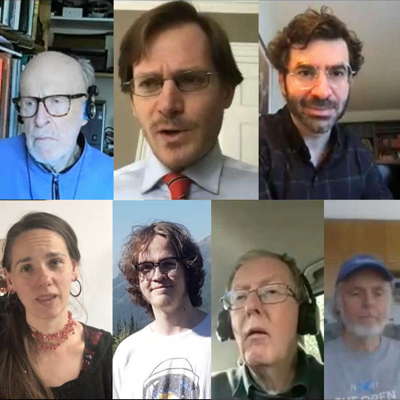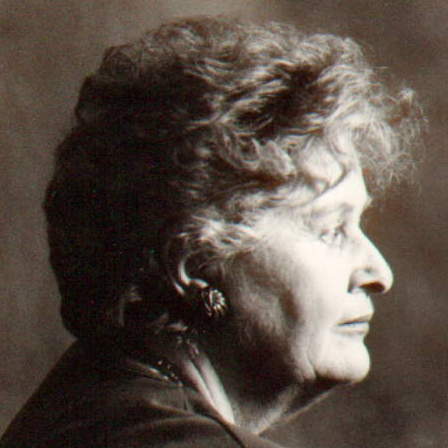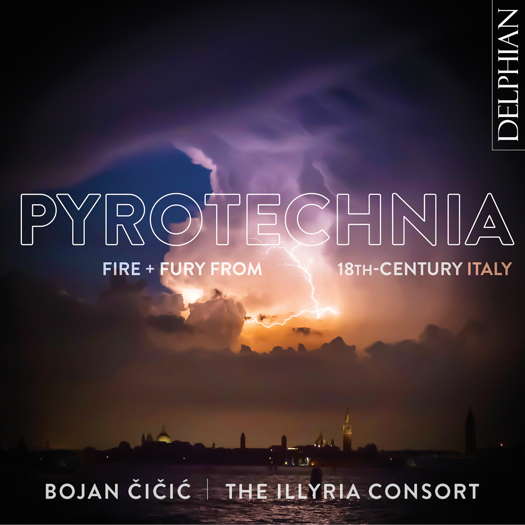 VIDEO PODCAST: John Dante Prevedini leads a discussion about Classical Music and Artificial Intelligence, including contributions from George Coulouris, Michael Stephen Brown, April Fredrick, Adrian Rumson and David Rain.
VIDEO PODCAST: John Dante Prevedini leads a discussion about Classical Music and Artificial Intelligence, including contributions from George Coulouris, Michael Stephen Brown, April Fredrick, Adrian Rumson and David Rain.
 SPONSORED: An Integral Part - Lindsey Wallis looks forward to the Canadian Music Centre's tribute concert to composer Roberta Stephen.
SPONSORED: An Integral Part - Lindsey Wallis looks forward to the Canadian Music Centre's tribute concert to composer Roberta Stephen.
All sponsored features >>
 DISCUSSION: John Dante Prevedini leads a discussion about Composers, individuals or collective?, including contributions from David Arditti, Halida Dinova, Robert McCarney and Jane Stanley.
DISCUSSION: John Dante Prevedini leads a discussion about Composers, individuals or collective?, including contributions from David Arditti, Halida Dinova, Robert McCarney and Jane Stanley.

Vibrantly Glowing Renditions
Virtuosic eighteenth century Italian violin concertos inspire GERALD FENECH
'Čičić ... surmounts all the monstrous challenges with prodigious dexterity.'
If there is a country that can claim to be one of the main exponents in music development during the baroque period, this is certainly Italy. Indeed, the eighteenth century was one of the richest periods regarding great composers, and Italy was no exception. This album focuses on three of the greatest names, particularly where violin playing is concerned.
Antonio Vivaldi (1678-1741), virtuoso violinist, teacher and cleric, was born in Venice. His influence during his lifetime was widespread across Europe, and his fame is based mainly on the huge number of instrumental works he wrote for the violin, apart from other instruments. His sacred and operatic compositions are also considered as being among the best of his times. Many of his pieces were written for the female music ensemble of the Ospedale della Pieta, a home for abandoned children where Vivaldi was employed from 1703 to 1715 and from 1723 to 1740. After meeting the Emperor Charles VI, the composer moved to Vienna hoping for preferment; however the Emperor died soon after Vivaldi's arrival, and he himself died less than a year later in abject poverty.
Listen — Vivaldi: Allegro (Violin Concerto in D, RV 205)
(track 1, 0:00-0:56) ℗ 2021 Delphian Records Ltd :
Giuseppe Tartini (1692-1770), violinist, composer and theorist, laid the foundations of the modern school of bowing in a more 'singing' manner than that of his contemporaries. Born in Pirano, he started studying for the priesthood after his father's wish. After three years at Padua University studying law, he secretly married a niece of Cardinal Cornaro in 1713. This landed him in trouble, and he had to leave his wife and take refuge in an Assisi monastery. There he practiced the violin and studied music theory and also composed his famous 'Il Trillo del Diavolo', an attempt to reconstruct a sonata he said the devil had played to him in a dream. Tartini wrote two Treatises on music and ornamentation, of which sections of the latter were incorporated in Leopold Mozart's Violin School (1756). Compositionally, Tartini wrote about 150 concertos and a hundred violin sonatas with figured-bass accompaniment. They combine the dignity and serenity of Corelli with a passion and grace all his own, and are considered to be more complicated and advanced than those of his predecessors.
Listen — Tartini: [Allegro – Capriccio] (Violin Concerto in E, D 48)
(track 9, 0:00-0:43) ℗ 2021 Delphian Records Ltd :
Pietro Locatelli (1695-1764), one of the first great violinists who practiced virtuosity for virtuosity's sake, extended the vocabulary of the violin to almost unlimited lengths. Aged fourteen, the composer became a member of the instrumental ensemble of Santa Maria Maggiore in Bergamo. When sixteen, he went to Rome to further his studies, and perhaps to benefit from Corelli's knowledge of the violin. Locatelli toured widely, refining his skills. About 1729 he finally settled in Amsterdam until his death. It was in this city that he published almost all of his works and gave public performances in favour of regular concerts for a group of wealthy amateurs. His playing was particularly admired for its double stops and he frequently used special tunings for special effects. Some of his bravura passages in his studies and caprices, which anticipate those of Niccolo' Paganini in their concentration on technical feats, are indeed arresting. As a composer, Locatelli was mainly drawn to the sonata and concerto forms, and both genres reveal him to have been capable of elegant and expressive melody.
Listen — Locatelli: Allegro – Capriccio (Violin Concerto in D, Op 3 No 12)
(track 11, 0:01-0:55) ℗ 2021 Delphian Records Ltd :
Contemporary accounts of the violin playing of these three masters show the extent to which they raised the instrument to hitherto unknown extremes of soloistic virtuosity – able in its spontaneity and sonorous brilliance to hold its own against an orchestra playing with passionate intensity, but, in this respect, it was Vivaldi who paved the way for others to follow. Three of the four concertos on this CD are in D, and three have movements ending in a 'capriccio' – a sequence designed to show that the idea of a virtuosic display cadenza, usually associated with the classical concerto of a later period, had already developed during the first half of the eighteenth century. Vivaldi's RV 213a is a first recording.
Listen — Vivaldi: Allegro (Violin Concerto in D, RV 213a)
(track 4, 3:06-4:04) ℗ 2021 Delphian Records Ltd :
Fittingly, the album's title is borrowed from John Babington, author of the earliest guide to fireworks published in Europe – Pyrotechnia. Bojan Čičić and his Illyria Consort are absolutely on fire, and their vibrantly glowing renditions bring to light all the innovative features of these scores. Čičić in particular surmounts all the monstrous challenges with prodigious dexterity. This is hugely uplifting stuff that stimulates and inspires. Notes and sonics are first-rate.
Copyright © 12 November 2021
Gerald Fenech,
Gzira, Malta

MORE CLASSICAL MUSIC ARTICLES ABOUT ITALY


